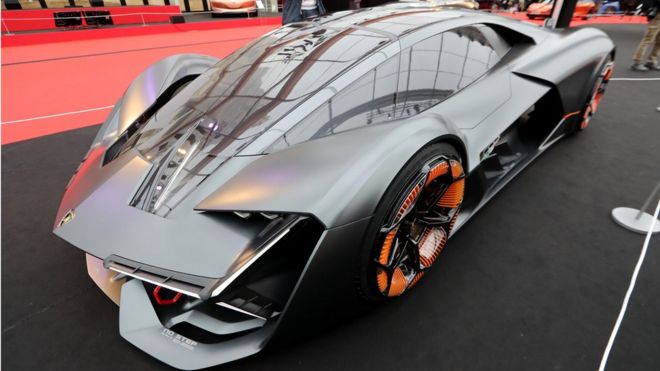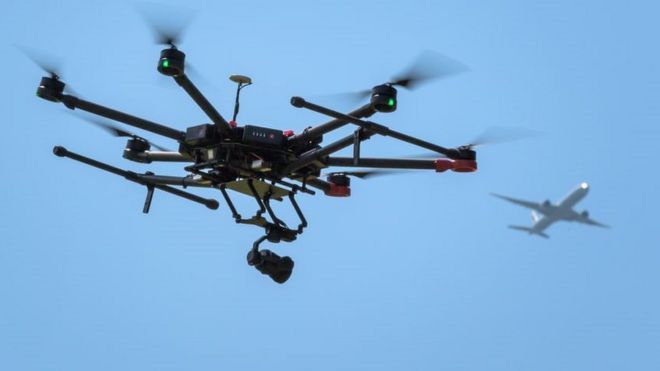On 24 November 2018, a UTM senior lecturer Ts. Dr. Rozzeta Dolah CEng has been awarded as Tokoh Perdana 2018 by Education Malaysia in the United States of America. The award is given during the Perdana Scholar Awards (PSA 2018) event at Embassy of Malaysia Washington D.C.. PSA 2018 is an event…
Fancy charging up your electric car in 10 minutes?
 Image copyrightAFP/GETTY IMAGES
Image copyrightAFP/GETTY IMAGESImagine being able to charge your electric car in minutes rather than hours, or your smartphone in seconds.
That’s the enticing prospect being touted by researchers who reckon they’ve discovered a new material that could boost the performance of a carbon-based supercapacitor – sometimes called an ultracapacitor – a type of energy storage device that can be charged very quickly and offload its power very quickly, too.
Dr Donald Highgate, director of research at Superdielectrics Ltd, says a material he originally developed for soft contact lenses is also surprisingly good at holding an electrostatic field.
Very simply, supercapacitors don’t produce electricity through chemical reactions as conventional batteries do, they create these electrostatic fields.
Dr Highgate is working with Bristol and Surrey universities to develop supercapacitors using the new polymer and hopes that they could eventually rival, or even surpass, lithium-ion (li-ion) batteries – so long as they manage to replicate prototype performance on a large scale.
So far, supercapacitors have been good at providing quick bursts of power – to start a car engine, for example, or to give trains a boost when accelerating. They’re also well-suited to harvesting energy from vehicles when they brake, making them an important component in electric vehicles.
 Image copyrightGETTY IMAGES
Image copyrightGETTY IMAGESAnd national electricity grids use them to provide quick power top-ups when balancing supply and demand.
South Korea’s capital Seoul is hoping to have 3,500 supercapacitor-powered buses operating by 2020, and they’re also being used in Shanghai, China. European car maker PSA Peugeot Citroen has been using them in its cars since 2010 – supercapacitor maker Maxwell Technologies says more than a million vehicles now incorporate its products.
But to date, supercapacitors haven’t been very good at holding much power or holding on to that power for very long.
This poor energy density, as it’s called, the amount of power they can hold per kilogramme, has put them at a significant disadvantage to li-ion batteries.
Congratulations UTM! Ranked #53 in QS World University Rankings by Faculty Engineering & Technology

WAKAF PENDIDIKAN UTM
CARA-CARA BERWAKAF DI DANA WAKAF PENDIDIKAN UTM:
a) Tunai boleh dikreditkan di Bank CIMB bernombor akaun : 8602945779
b) Cek/Bank Draf/Wang Pos/Kiriman Wang (Bayaran atas nama BENDAHARI UTM.) Sila majukan salinan cek/bankd raf/wang pos/kiriman wang bersama borang ini ke alamat Aras 4, Bangunan Canseleri, Univesiti Teknologi Malaysia, 81310 Johor Bahru, bagi tujuan tuntutan.
c) Boleh layari http://www.e-wakafjohor.gov.my/v2/index.php?option=com_content&view=article&id=166, dan bagi pendaftaran boleh melihat tutorial disini http://www.e-wakafjohor.gov.my/v2/index.php?option=com_content&view=article&id=77&Itemid=500
Sebarang kemuskilan boleh menghubungi kami di talian 07-5531267 / 31047, Faks : 07-5531046, emel : wakaf@utm.my dan FB kami : Wakaf UTM
Drone-tracking system paves way for UK deliveries from air
 Image copyrightGETTY IMAGES
Image copyrightGETTY IMAGESEfforts to create an automated UK drone-tracking system pave the way for commercial operators to fly unmanned aircraft regularly over longer distances than is currently possible.
At present, owners are required to keep drones within their own line of sightunless they have been given special permission to do otherwise.
The new system is being co-developed by the air traffic control service Nats and a start-up, Altitude Angel.
They aim to launch it in 2019 or 2020.
The aim is to keep the lower-level air space, to which drones would still be restricted, safe.
That means preventing drones crashing into each other as well as eliminating the risk to passenger jets and other manned aircraft, which are already tracked.
“This technology will enable us to be able to create a single picture so we can see where everyone is intending to fly and where they are already flying,” the head of drones at Nats, Andrew Sage, told the BBC.
“Altitude Angel has a lot of expertise in data management that we don’t have within Nats… and we are deploying that technology so we can react more quickly.”
He added that the initiative should also help tackle the number of near-misses between drones and planes, which have been on the rise.
The two organisations had previously collaborated to develop an app used to provide guidance to drone pilots about safe places to fly.
Drone deliveries
Nats says it has already had conversations with the drone industry and believes trials of the new system could begin within the UK before the end of 2018.
Unmanned aircraft would still need to be fitted with technology to allow their locations to be shared, as well as sensors and software to react independently to collision threats.
 Image copyrightAMAZON
Image copyrightAMAZONMr Sage predicted that blood deliveries and search-and-rescue missions would be among early uses of drones that could fly beyond their operators’ sightlines.
But another expert said companies such as Amazon might be keen to shift parts of their logistics operations off the road.
“Drones flying beyond line of sight would be a very big deal – the scope of operations just changes dramatically,” commented Dr Ravi Vaidyanathan, from Imperial College London.
“Goods deliveries would be one example of how it could be put to use, because products could be sent from a warehouse to a distant location.
“One could argue that if a drone has to be limited to being within line of sight, as at present, then it’s probably easier to drop the package off yourself.”
http://www.bbc.com/news/technology-43302583





